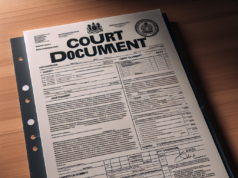
ILLINOIS DIVORCE LAWS & REGULATIONS UPDATE 2023
A DECADE OF TRANSFORMATION: AN OVERVIEW OF ILLINOIS DIVORCE LAWS AND REGULATIONS TIMELINE (2013-2023)
In the last ten years, Illinois has witnessed substantial changes in its divorce laws and regulations. These modifications reflect the state’s commitment to modernizing its legal framework while ensuring fairness, transparency, and the well-being of families involved in divorce proceedings. From property division to child custody, the amendments underscore Illinois’ dedication to addressing the evolving needs of contemporary families. This article provides a concise overview of key updates in Illinois’ divorce laws and regulations from 2013 to 2023, arranged by the year of implementation.
2013: Collaborative Law Enactment
– Introduction of collaborative law procedures encouraging cooperative divorce resolutions.
2014: Parental Responsibilities and Parenting Time
– Shift from “child custody” to “parental responsibilities” and “parenting time” to prioritize shared parenting.
2015: Same-Sex Marriage Equality
– Implementation of marriage equality laws extending divorce rights to same-sex couples.
2016: Income Shares Model for Child Support
– Adoption of an income shares model for calculating child support obligations.
2017: Removal of Permanent Alimony
– Elimination of permanent alimony in favor of rehabilitative or temporary support.
2018: Relocation Standards for Custodial Parents
– Introduction of stricter standards for custodial parents wishing to relocate with children.
2019: Spousal Maintenance Guidelines Update
– Revision of guidelines for awarding spousal maintenance, considering factors like duration of marriage and income.
2020: Parenting Plan Revisions
– Emphasis on comprehensive parenting plans addressing decision-making and parenting time.
2021: Financial Disclosures Enhancements
– Strengthening of financial disclosure requirements to promote transparency and fairness.
2022: Alternative Dispute Resolution Promotion
– Encouragement of alternative dispute resolution methods like mediation for amicable divorce settlements.
2023: Retirement Asset Division
– Clearer guidelines for the division of retirement assets acquired during the marriage.
2023: Child Support Adjustments Review
– Review and potential adjustment of child support calculations to reflect economic changes.
Illinois’ commitment to revising its divorce laws underscores the state’s proactive approach in meeting the evolving needs of families while promoting fairness and the well-being of all parties involved. As Illinois continues to adapt its legal landscape, it remains crucial for policymakers, stakeholders, and the public to engage in informed conversations that uphold the principles of justice and equity, supporting families navigating the intricate process of divorce.
Residency and Filing Needs
There are some aspects of divorce in Illinois that you need to know about before proceeding with anything. First off, if one spouse intends to file, that spouse will then be called the ‘Petitioner.’ The other spouse will be called the ‘Respondent’ in the matter.
Once divorce is eminent, there’s one requirement in the state of Illinois that needs to be met before filing.
• Either party must be an Illinois resident for at least 90 days prior to filing for divorce, and proceedings may occur either in the Petitioner’s county circuit court or the Responder’s county circuit court.
Reasons for Divorce in Illinois
There are many reasons for it, but for the most part the court separates all reasons into two categories:
• No-Fault Divorce
• Fault Divorce
“No-Fault” basically can mean three things –
1) Both Parties Must Have Been Living Separately for at Least Two Years
2) Both Parties Can Separate for at Least Six Months After Filing for Divorce in Order to Waive in Writing the 2-Year Separation Requirement
“Fault” divorce in Illinois, however, is an entirely different situation.
Grounds for that divorce can include one or more of these as determined by a court of law:
• Natural Impotence
• The Respondent Has a Active Prior Marriage
• Adultery
• Willful Abandonment for at Least One Year
• Evidence of Alcohol and/or Drug Abuse for at Least Two Years
• Physical or Mental Abuse
• Felony Conviction
• STD Infection From Respondent
Both “No-Fault” and “Fault” divorce have separate stipulations that can affect custody, child support, and spousal support.
The Definition of “Legal Separation” Versus “Divorce”
Of course, both parties to a marriage may elect to “legally separate” instead of proceed through a divorce. What’s the difference?
A legal separation is essentially both parties agreeing to go their separate ways without dissolving the marriage. There are many reasons for doing this, one being the need to retain certain benefits within the marriage agreement that would otherwise be discontinued upon a divorce. For instance: medical insurance.
Typically, though, a legal separation does lead to a divorce agreement, in which case all grounds for divorce move forward, as well as the marriage then becomes dissolved in a court of law along with any other benefits and assets, questions of child custody, parenting time, and support (if children are in fact present).
The Primary Documents For a Divorce in Illinois
Ten or twenty documents may be included in the proceeding, not limited to these:
• Verification Statement
• Waiver of Two Year Statutory Period of Separation
• Financial Disclosure Statement
• Entry of Appearance, Waiver, and Consent
• Petition for Dissolution of Marriage
• And Judgment for Dissolution of Marriage
Divorce in Illinois : Property Distribution
When it comes to divorce in Illinois, it’s important to know that the state favors “equitable distribution.” This simply means that all assets are divided equally among both parties regardless of either party’s wishes. Sometimes, though, this doesn’t necessarily mean that “equitable” will be equal. Rather, the word fair is more the proper term to be used when dealing with property distribution.
Typically the court will encourage both the Petitioner and Respondent to come to an agreement about property distribution. If there’s no agreement, the court will decide.
In addition, the court may also award the wife her former or maiden name upon agreement of the divorce.
Divorce in Illinois : On the Subject of Spousal Support
This issue may only be relevant if the court or both parties see a need for either party to support the other financially for any reason either on a temporary or permanent basis.
Divorce in Illinois : Dealing With Child Custody
Generally speaking, parents can come to an agreement on this matter regarding divorce in Illinois in several ways:
• Joint Physical Custody
• Sole Physical Custody
• Joint Legal Custody
• Sole Physical Custody
“Joint Physical Custody” is essentially sharing custody of the child(ren) in terms of where the child(ren) may live: either in mother’s residence, or father’s residence. Child(ren) retains two addresses. Both parties are equally responsible for the well-being of the child(ren) as well as for the education of the child(ren).
“Sole Physical Custody” is when one party retains physical custody of child(ren) and the other party retains “Visitation Rights.”
“Joint Legal Custody” is when both parents share the right to make important decisions in the life/lives of the child(ren), which may include legal name, lifestyle, needs, etc. etc.
“Sole Legal Custody” is when only one parent retains the right to make important decisions in the life/lives of the child(ren).
Divorce in Illinois : How to Determine Child Support If Necessary
Typically, the non-custodial parent pays child support. The Percentage of Income Formula is employed to determine the amount. By combining W2’s and other worksheets, an amount is determined that would best suit the needs of the child(ren) without unfavorable financial problems on the non-custodial party.
Generally speaking, both parties may agree to an amount. But in the event that a Petitioner and Respondent don’t, the court may utilize state support guidelines to arrive to a decision as to how much support is necessary for the child(ren).



























